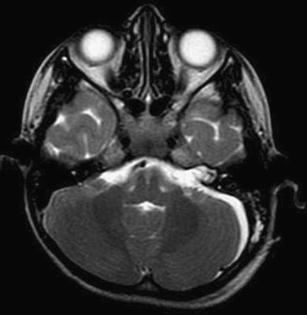
Parts of this nerveīelow we will take a closer look at both sections: 1. When these cells move, they send electrical signals to the auditory nerve, which is where the sound information received by the outer ear is processed, so they are essential for us to hear. Nerve impulses are transmitted from the hair cells, located in the inner ear, to the brain, where sounds are given meaning, that is, where auditory perception takes place. The degree of greater or lesser balance is assessed based on the stability of the body that connects the ear with the brain stem. The origin of the auditory nerve is in the peripheral ganglia.įor its part, the cochlear nerve begins in the Corti ganglion and the vestibular nerve in Scarpa’s. It is made up of two other nerves: the cochlear, which carries information about sound, and the vestibular, which does the same with information about balance. The auditory nerve, also known as the vestibulocochlear nerve or the statoacoustic nerve, is responsible for auditory function and balance. It is the eighth of the twelve cranial nerves and is responsible for balance and auditory function. These cells send the signal to the brain, an organ that will activate the muscles necessary to correct position and maintain balance. Within this structure we have a liquid that, when moving, activates cells, called hair cells or hair cells of the ear, which act as sensors. In relation to balance, when we move our head the vestibule detects these movements and sends signals to the brain to indicate in what position we are or if we have momentarily lost our balance.
Auditory canal function series#
The cochlea transforms these vibrations into electrical impulses, which travel through a series of structures that lead to the auditory cortex of the brain. When a sound reaches the ear, the sound waves impinge on the internal structures of the ear causing them to vibrate. The vestibulocochlear nerve is responsible for sending information from the cochlea and vestibule to the brain, stimuli which will be interpreted in the form of sound and balance. While the cochlear part of the nerve is responsible for the sense of hearing, the vestibular part is responsible for aspects related to balance. This nerve carries somatic afferent fibers from structures in the inner ear. The vestibulocochlear nerve (scientific name: nervus vestibulocochlearis) is the eighth cranial nerve (CN VIII), which is divided into two parts, the vestibular and the cochlear, both divisions being in charge of sensory function. When the second is not working well, the consequence is dizziness. When the first fails, our hearing suffers.

The auditory nerve is made up of two nerves of its own: the cochlear nerve, which carries information about sound, and the vestibular nerve, which carries information about balance.

In this post we explain in detail what the auditory nerve is.

Its role is key to communicate, as it is responsible for processing the auditory impulses from the outer ear.įor this reason, when the auditory nerve is damaged and does not function properly, hearing loss always occurs. One of them, responsible for balance and hearing, is the auditory nerve, also called the vestibulocochlear nerve or the statoacoustic nerve. The human skull has twelve pairs of nerves connected to the brain. What is the function of the auditory nerve? In this article we are going to answer the question ‘’What is the function of the auditory nerve?’’ We will explain what the auditory nerve is, what its parts are and its functions. Let’s take a closer look at the importance of this nerve. The way it sends information to the brain is somewhat complex, involving multiple pathways and activating several specific regions and types of neurons. The vestibulocochlear nerve constitutes the eighth cranial nerve pair and its function is essential for our survival, since it is thanks to it that we can hear and maintain our balance.


 0 kommentar(er)
0 kommentar(er)
